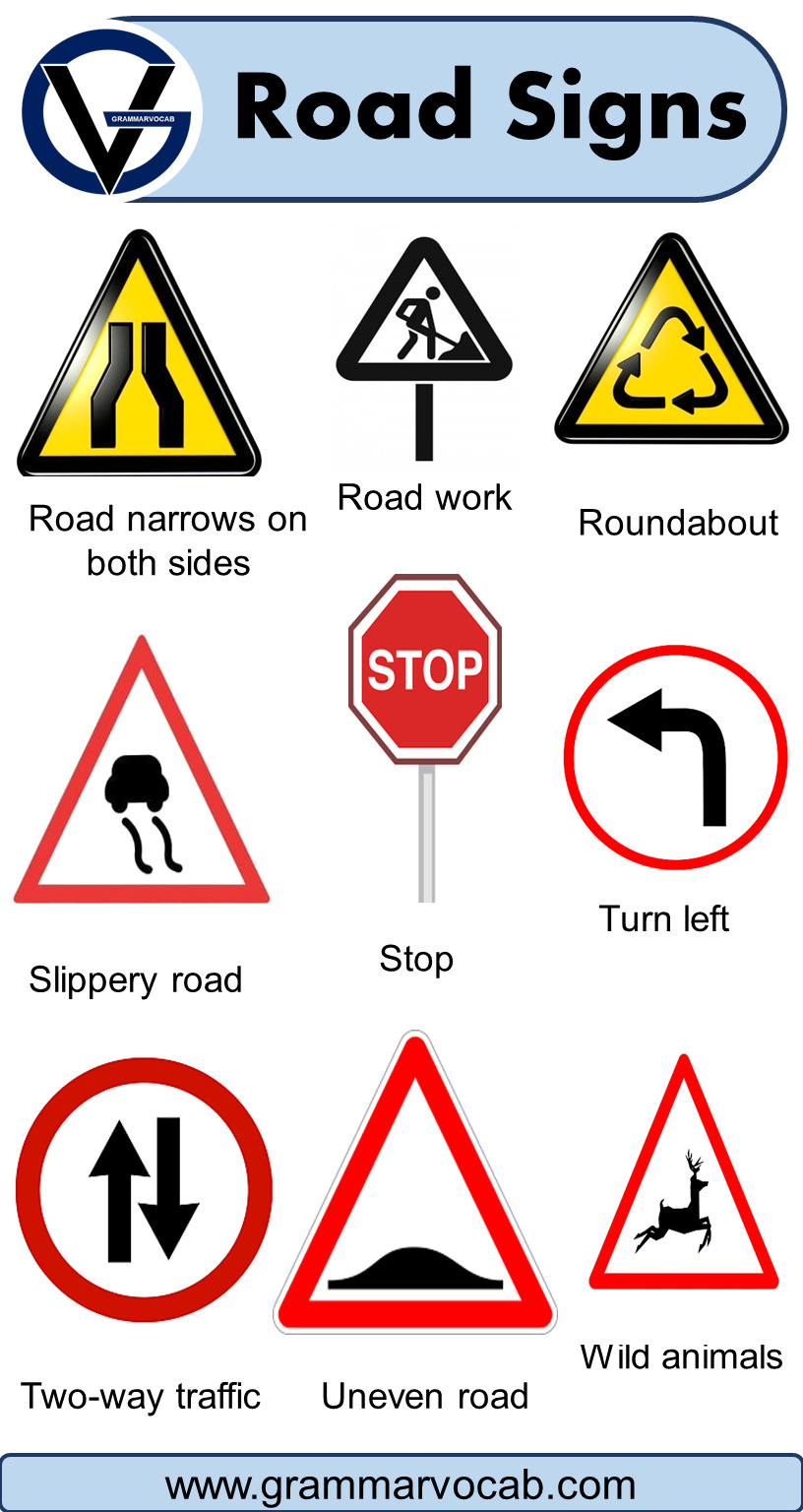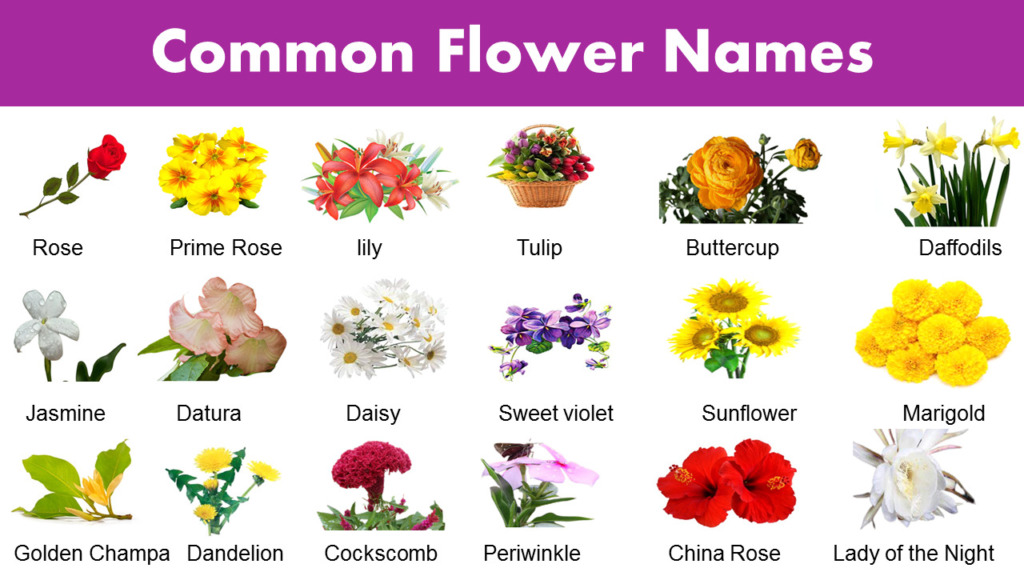Get ready to explore a list of road vocabulary! If you’re a new driver or someone who wants to improve their understanding of road signs and traffic signs, you’re in the right place. We’ve put together a handy list of road signs accompanied by pictures to help you easily recognize and comprehend them. With clear visuals and simple explanations, you’ll be able to navigate the roads confidently and safely. Let’s dive in and discover the world of road signs and traffic signs.
Road and Traffic Signs
Here is a list of different traffic signs
- Maximum speed
- Bend to right
- Stop and yield
- No left turn
- Roundabout
- Pedestrian crossing ahead
- Crossroads ahead
- Priority over oncoming vehicles
- One-way traffic
- The road narrows on both sides
- No U-turn
- No cycling
- Ahead only
- No motor vehicles
- No waiting
- Turn left ahead
- Turn left
- Wild animals
- Double bend
- Slippery road
- Roundabout ahead
- Two-way traffic ahead
- Minimum speed
- Falling rocks
- School crossing
- Uneven road
- No blowing of horn
- Road work
- Give way
- Traffic signs ahead
- Parking lot
- Dead end street
- No entry
- No stopping
- No overtaking
- Hump
Road Signs and Their Meanings
Road signs are an essential part of traffic control systems used to communicate important information, regulations, and warnings to drivers and pedestrians. They help ensure road safety and facilitate the smooth flow of traffic. Here are some common road signs and their meanings:
Regulatory Signs:
Regulatory signs are an essential component of traffic control systems. They are used to communicate specific laws, regulations, and instructions to drivers, pedestrians, and cyclists on the road. Regulatory signs typically have a rectangular or square shape, with a white background and black or red lettering. Here are some common types of regulatory signs:
- Stop Signs: This sign is red and octagonal in shape. It requires drivers to come to a complete stop at the marked stop line or before entering an intersection. Drivers must yield the right-of-way to vehicles or pedestrians in or approaching the intersection.

- Yield Signs: This sign is red and triangular in shape. It indicates that drivers approaching a yield sign must slow down and yield the right-of-way to other vehicles or pedestrians in the intersection or roadway they are entering.

- Speed Limit Signs: These signs display the maximum legal speed limit for a particular stretch of road. The speed limit may vary depending on the type of road, location, or other factors.
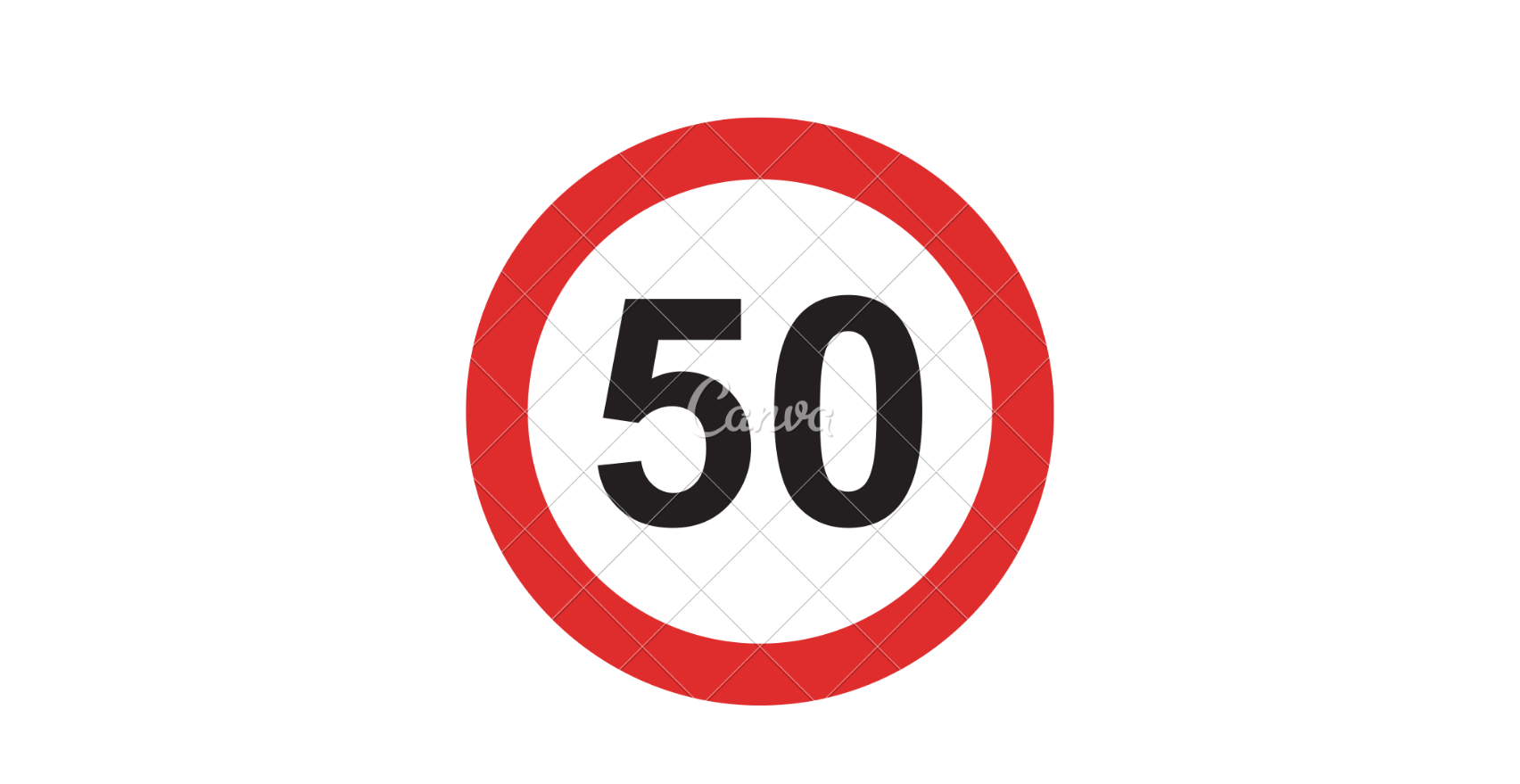
- No Entry Signs: This sign features a red circle with a white horizontal line across the center. It indicates that entry is prohibited for vehicles in the direction they are facing.
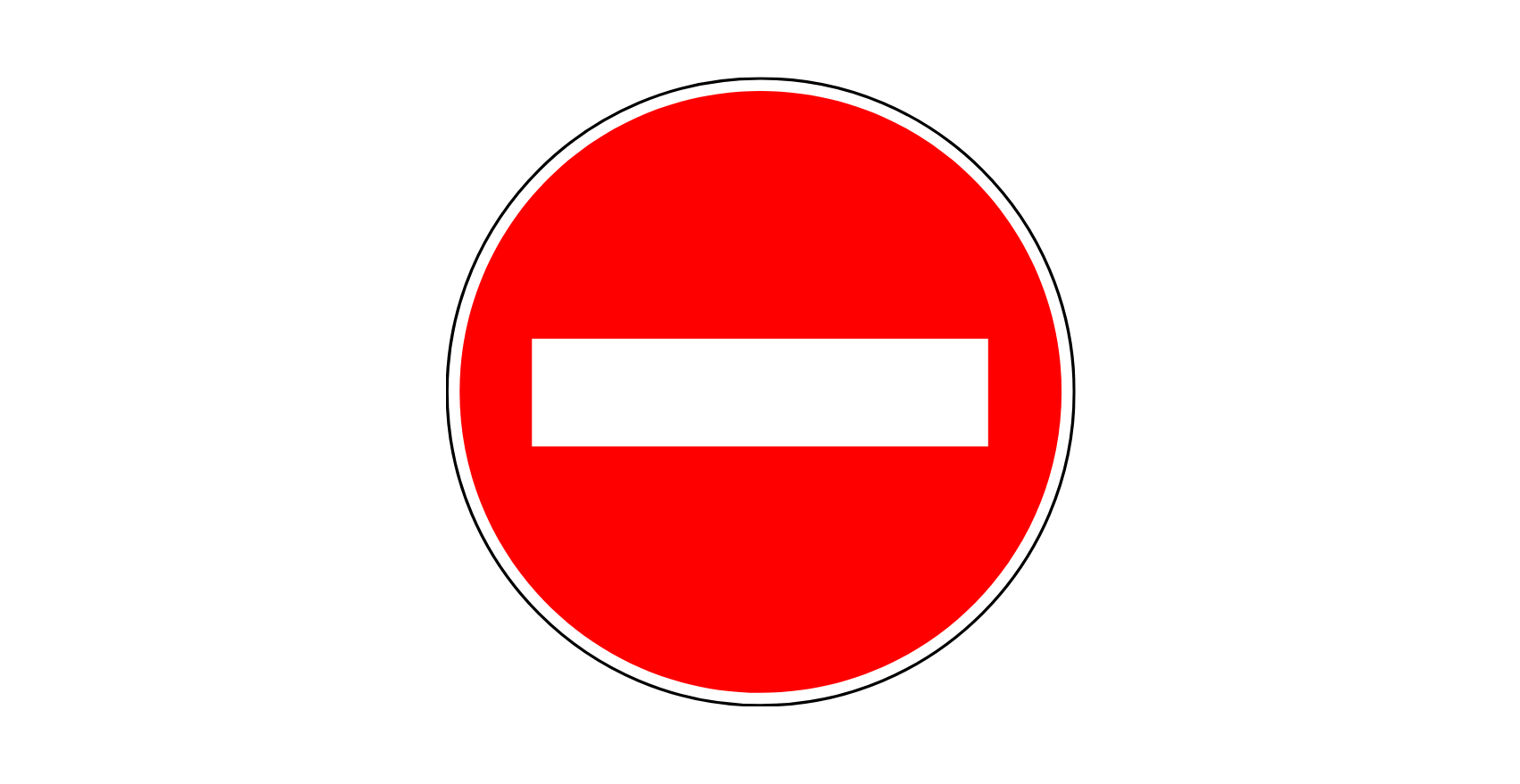
- One-Way Signs: This sign is rectangular, usually with an arrow pointing in one direction. It indicates that the road is designated for one-way traffic only in the direction indicated by the arrow.

- Do Not Enter Signs: Similar to the “No Entry” sign, this sign is white and rectangular with a red circle and a white horizontal line. It indicates that entry is prohibited for vehicles, and drivers should not enter the road.

- No U-Turn Signs: This sign consists of a white square with a red circle and a white horizontal line, with a black arrow curving inside the circle. It indicates that U-turns are not allowed at that location.
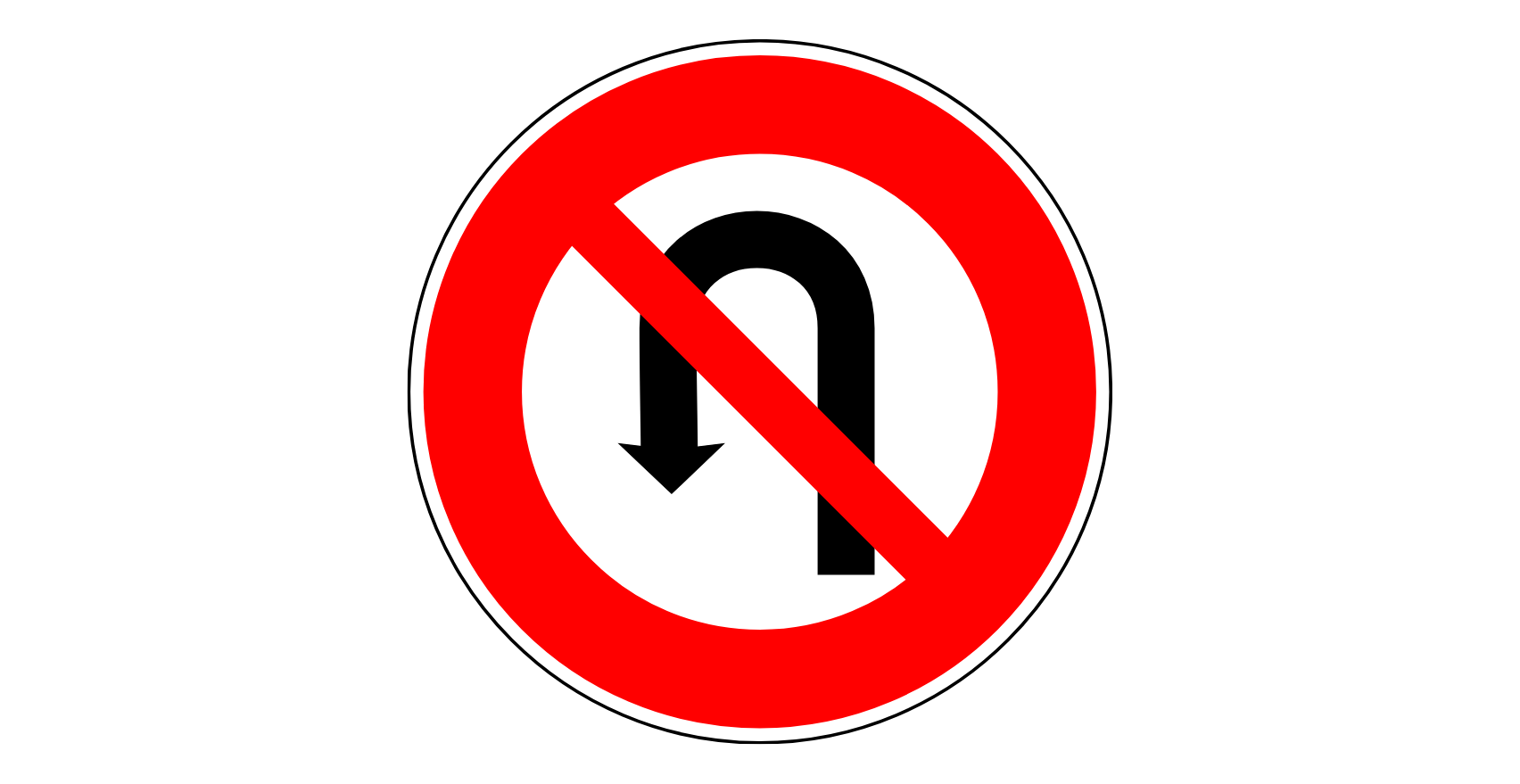
- No Parking Sign: This sign indicates areas where parking is not allowed. It may include specific time restrictions or other regulations, such as no parking during certain hours or for specific types of vehicles.
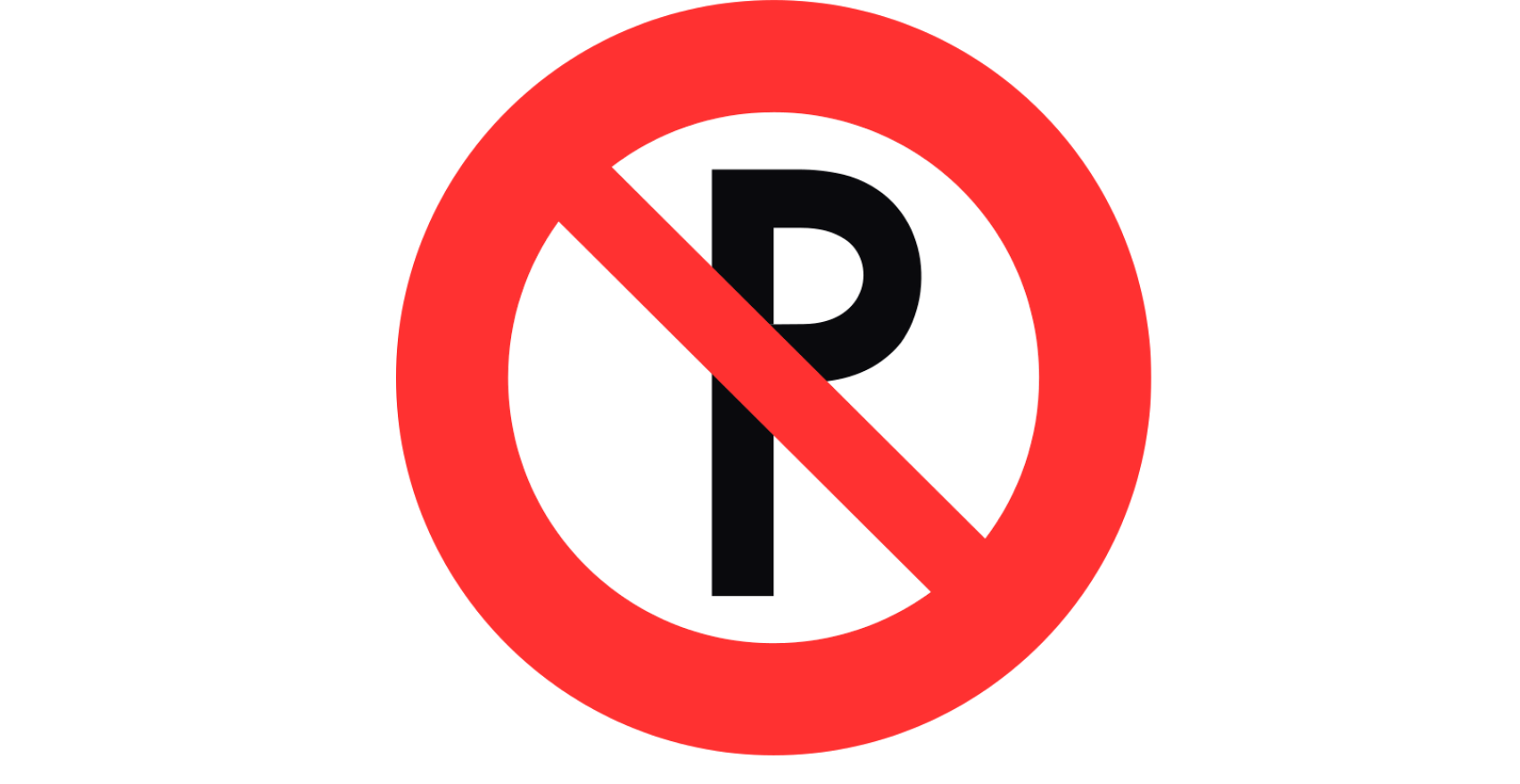
- No Right Turn/No Left Turn Sign: These signs indicate that right turns or left turns are not permitted at a particular intersection or location. They are often used to control traffic flow or prevent unsafe maneuvers.
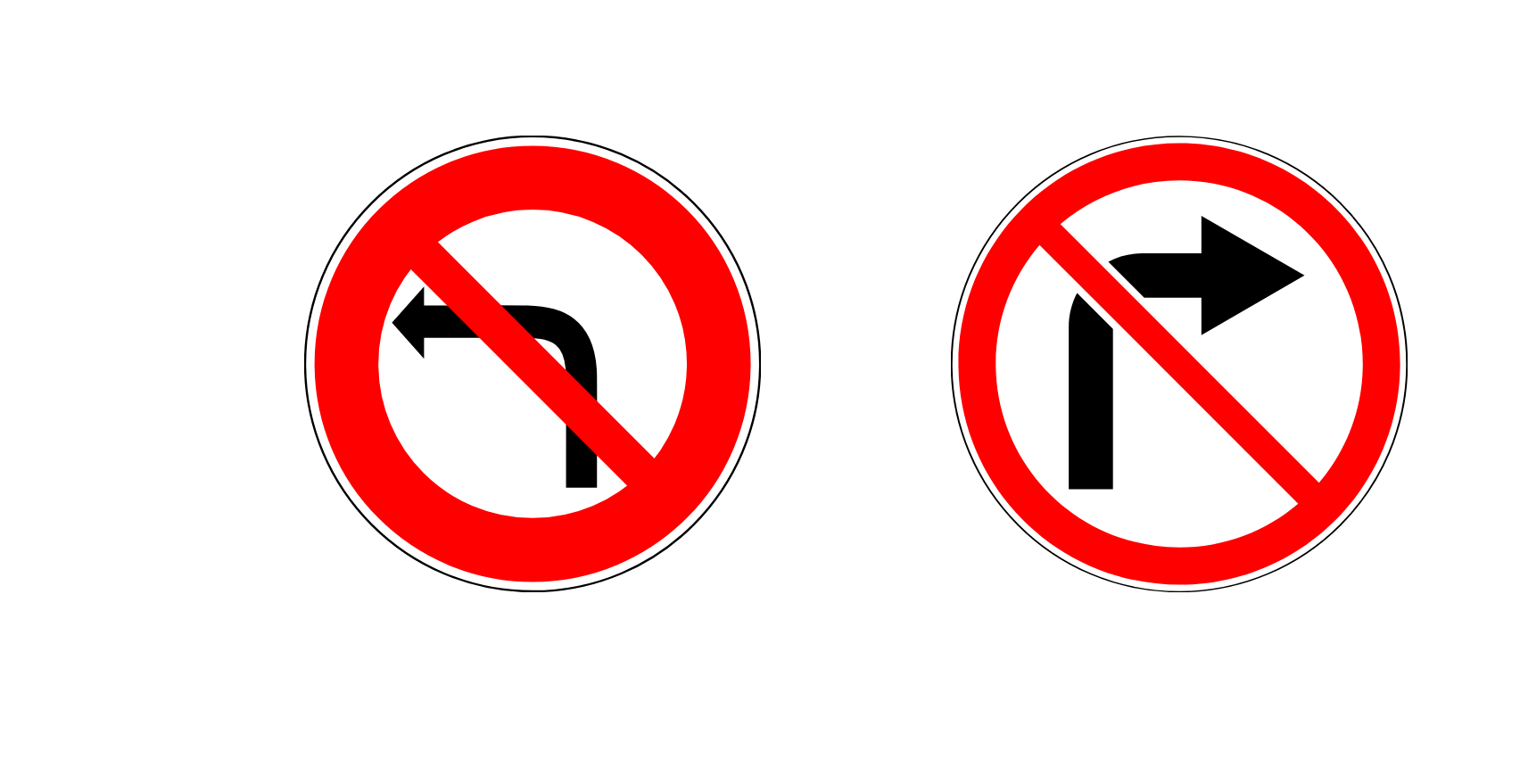
Warning Signs:
Warning signs are really important on roads because they tell people about things that could be dangerous or different on the road ahead. They help drivers, walkers, and bike riders know what to expect and be careful. There are different kinds of warning signs that are common, and they are made to catch people’s attention and make them aware of potential risks.
- Curve Ahead Signs: These signs feature a yellow diamond-shaped sign with a curved arrow, indicating an upcoming curve in the road. Drivers should adjust their speed and approach the curve with caution.
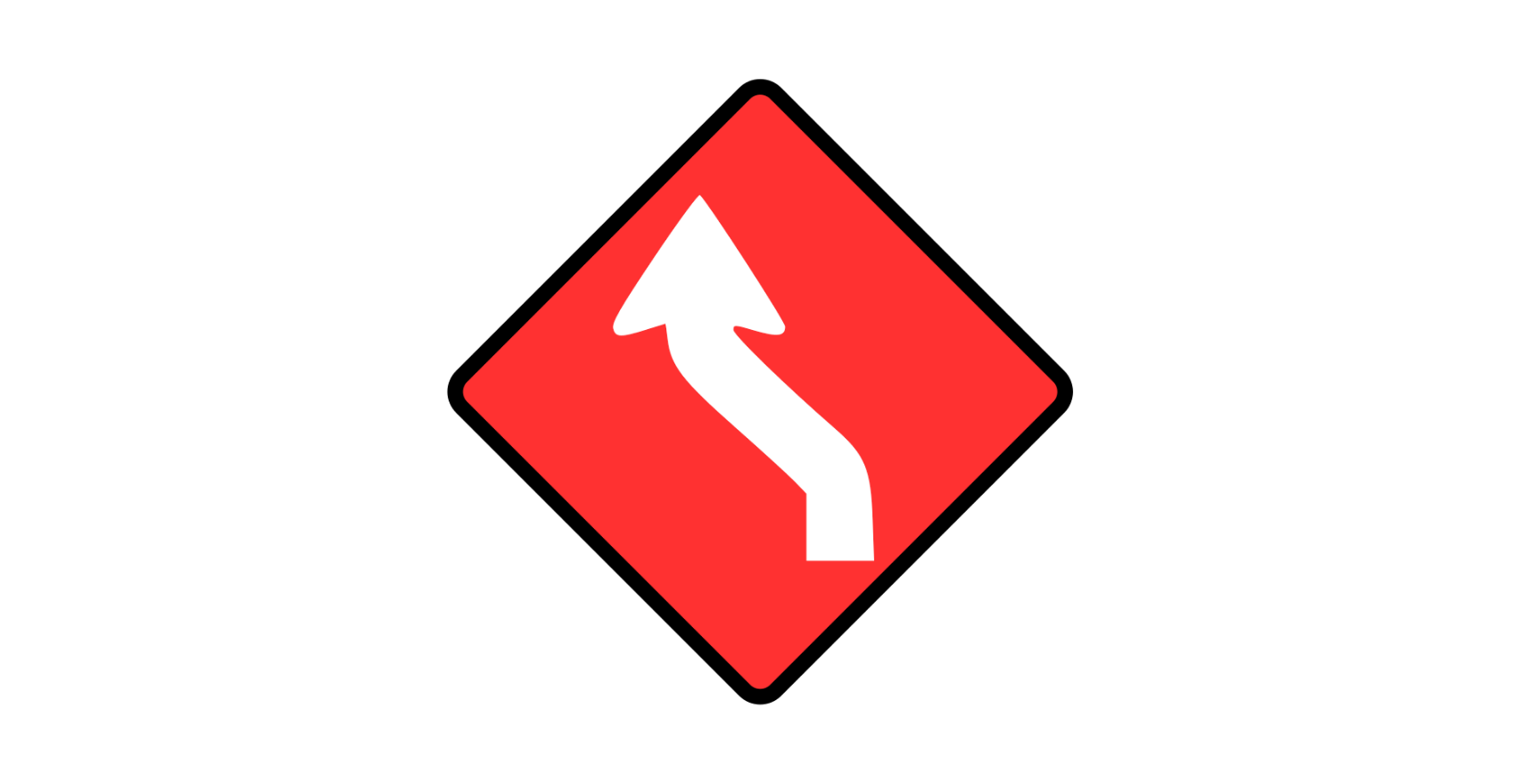
- School Zone Signs: These signs alert drivers to the presence of a school zone. They are usually fluorescent yellow-green in color and feature a symbol of children. The signs indicate reduced speed limits and increased caution in the designated area.
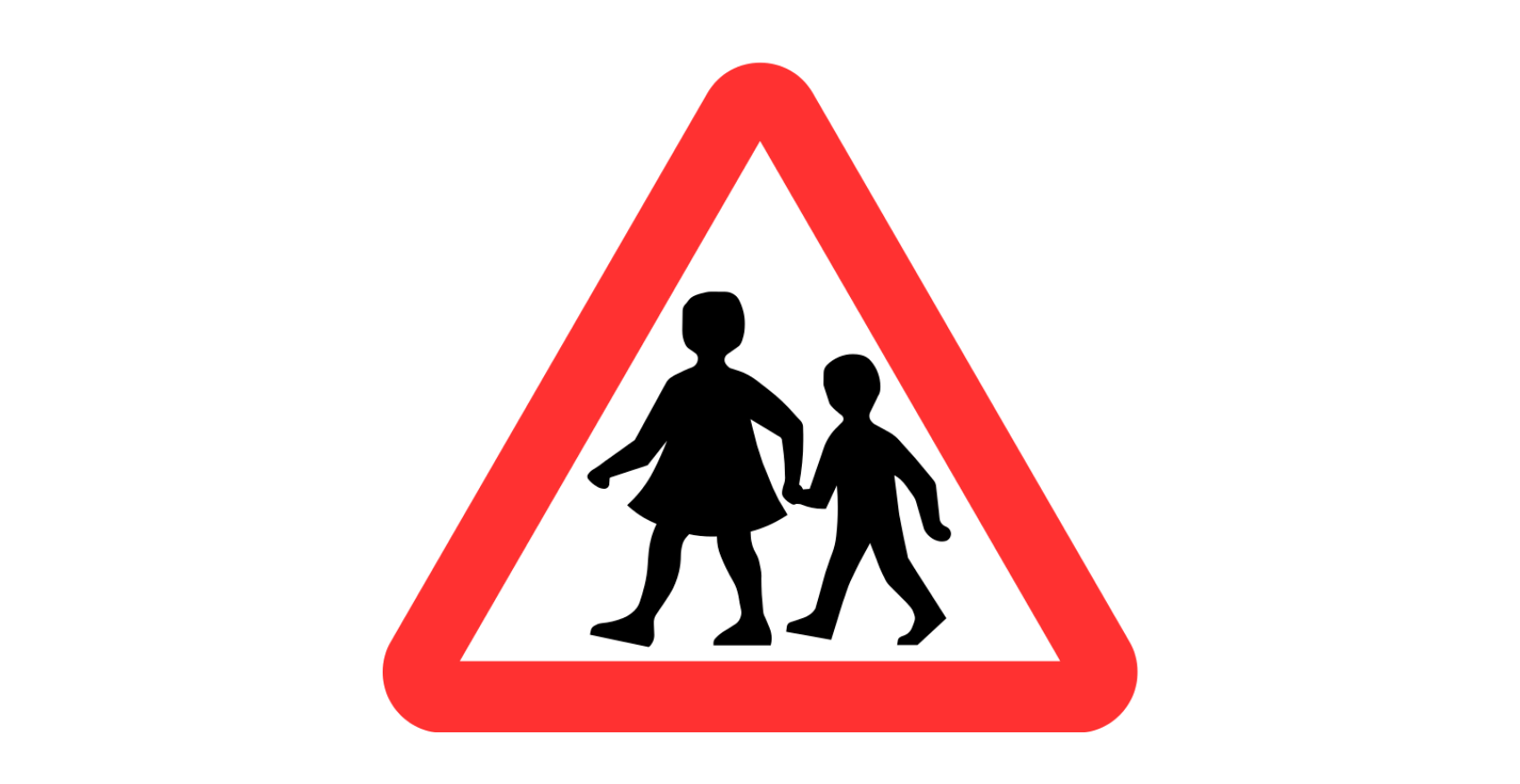
- Pedestrian Crossing Signs: These signs warn drivers that there is a designated pedestrian crossing ahead. They typically feature a symbol of a person walking and are meant to remind drivers to watch for pedestrians and yield the right-of-way as necessary.
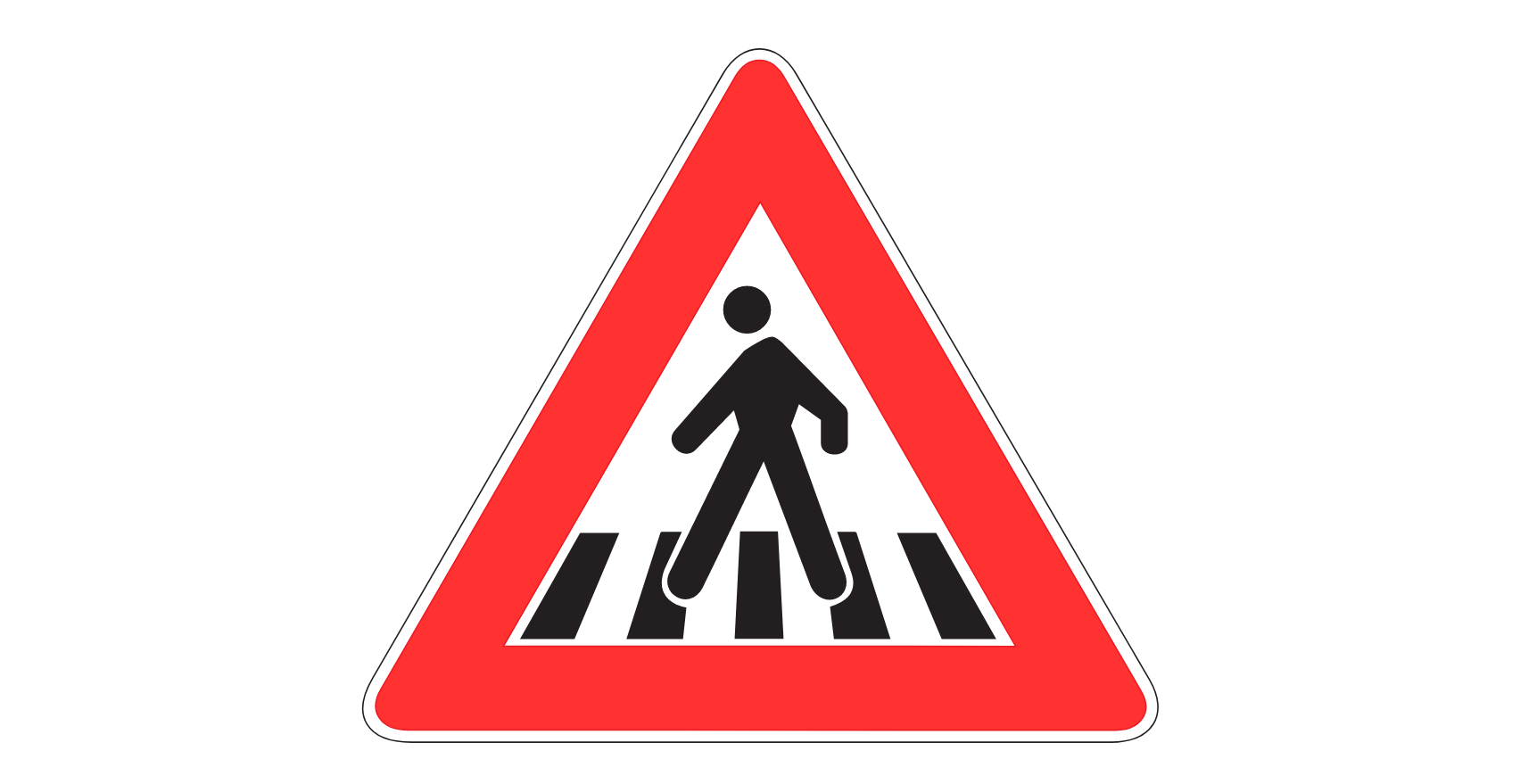
- Deer Crossing Signs: These signs warn drivers of areas where deer are known to cross the road frequently. They are typically yellow and depict a leaping deer silhouette. Drivers should be cautious and prepared to slow down or stop if necessary.
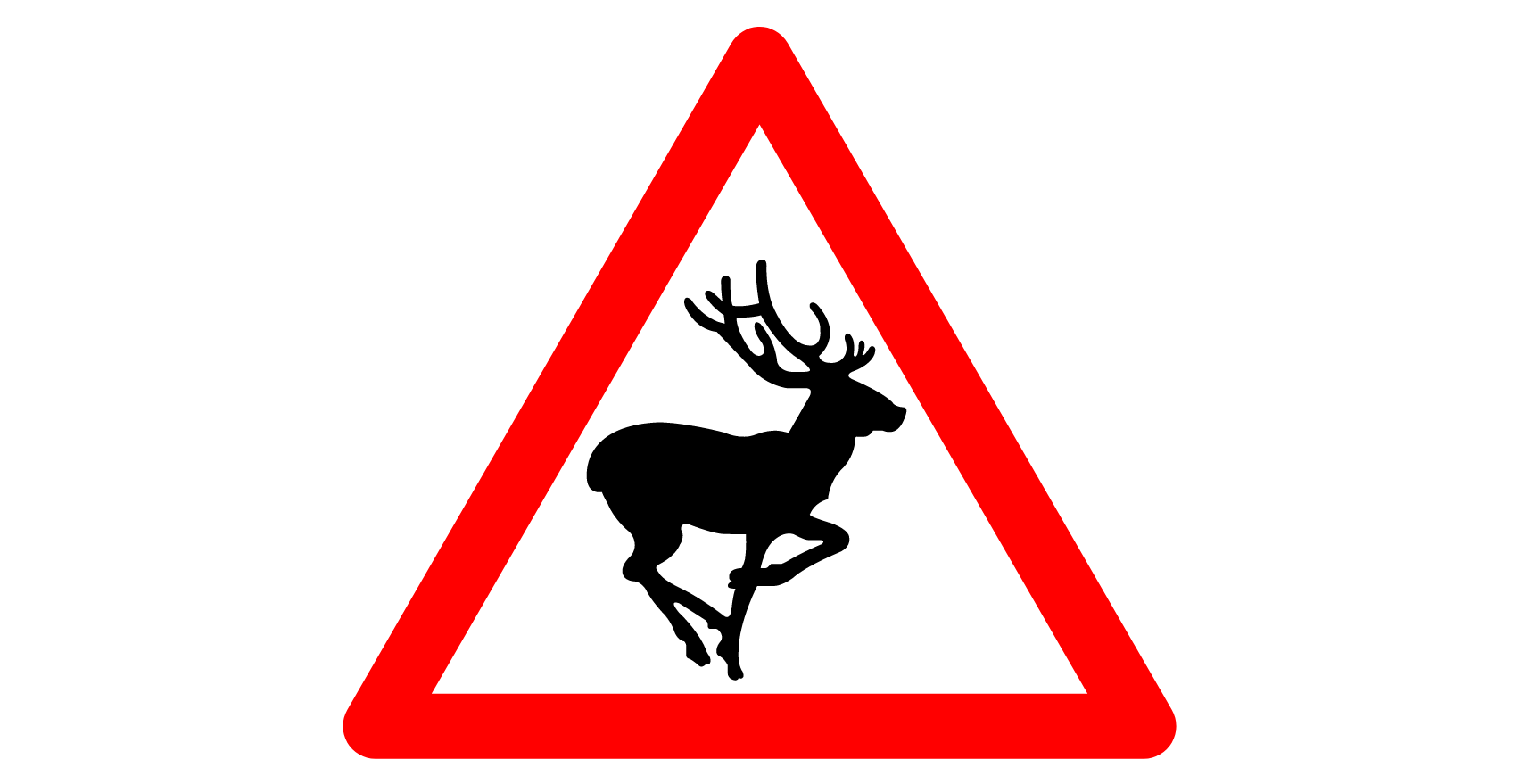
- Slippery When Wet Signs: These signs warn drivers of road sections that may become slippery when wet. They are typically yellow and feature a depiction of a car with wavy lines behind it, indicating a loss of traction.

Road Work Signs:
- Road Work Signs: These signs are used to warn drivers of construction or maintenance work on the road ahead. They often feature an orange background and black symbols indicating the type of work or specific instructions, such as “Road Work Ahead” or “Detour.”
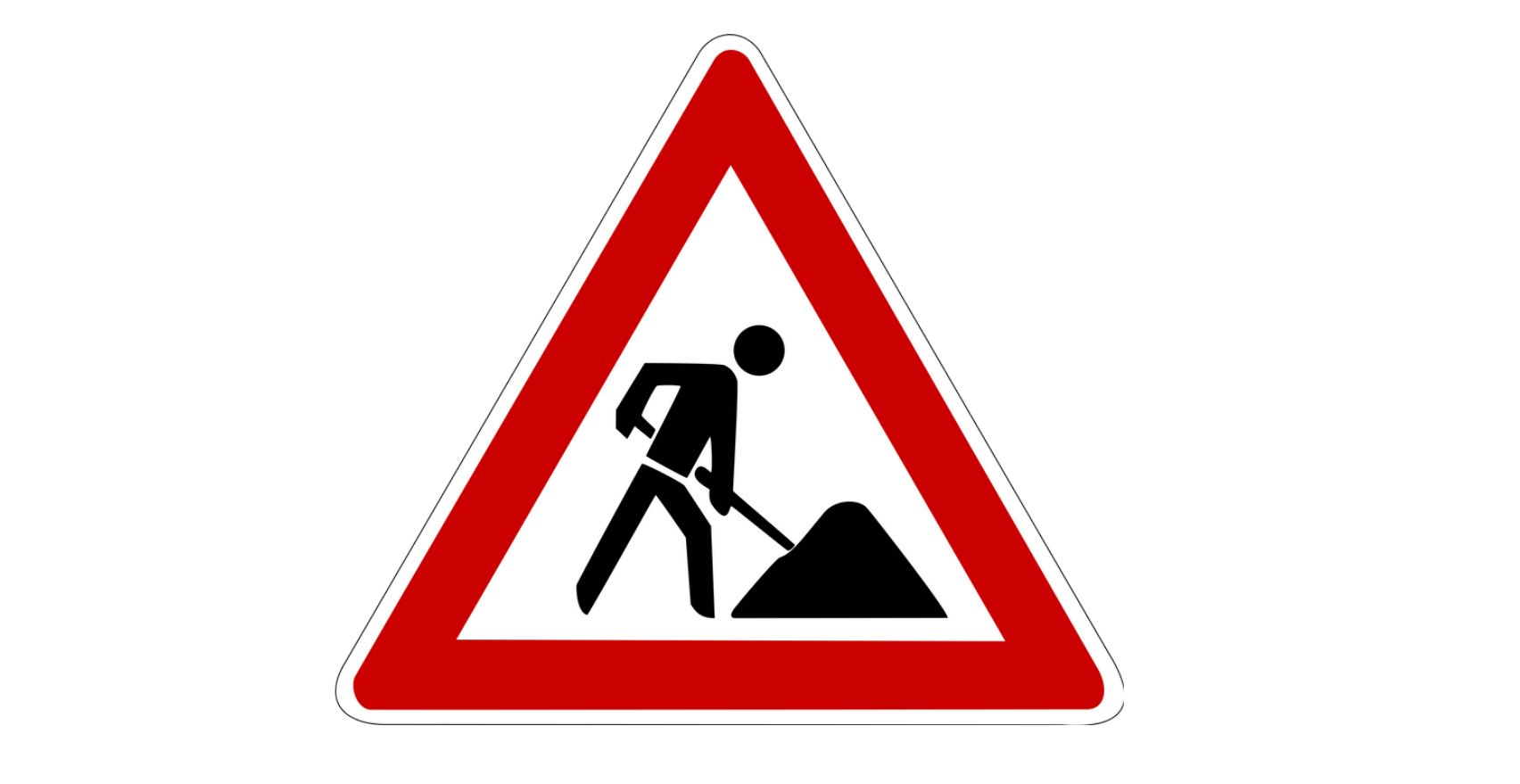
- Traffic Signal Ahead Signs: These signs warn drivers of an upcoming traffic signal. They are usually yellow and feature an image of a traffic signal along with an arrow indicating the direction of the upcoming signal.
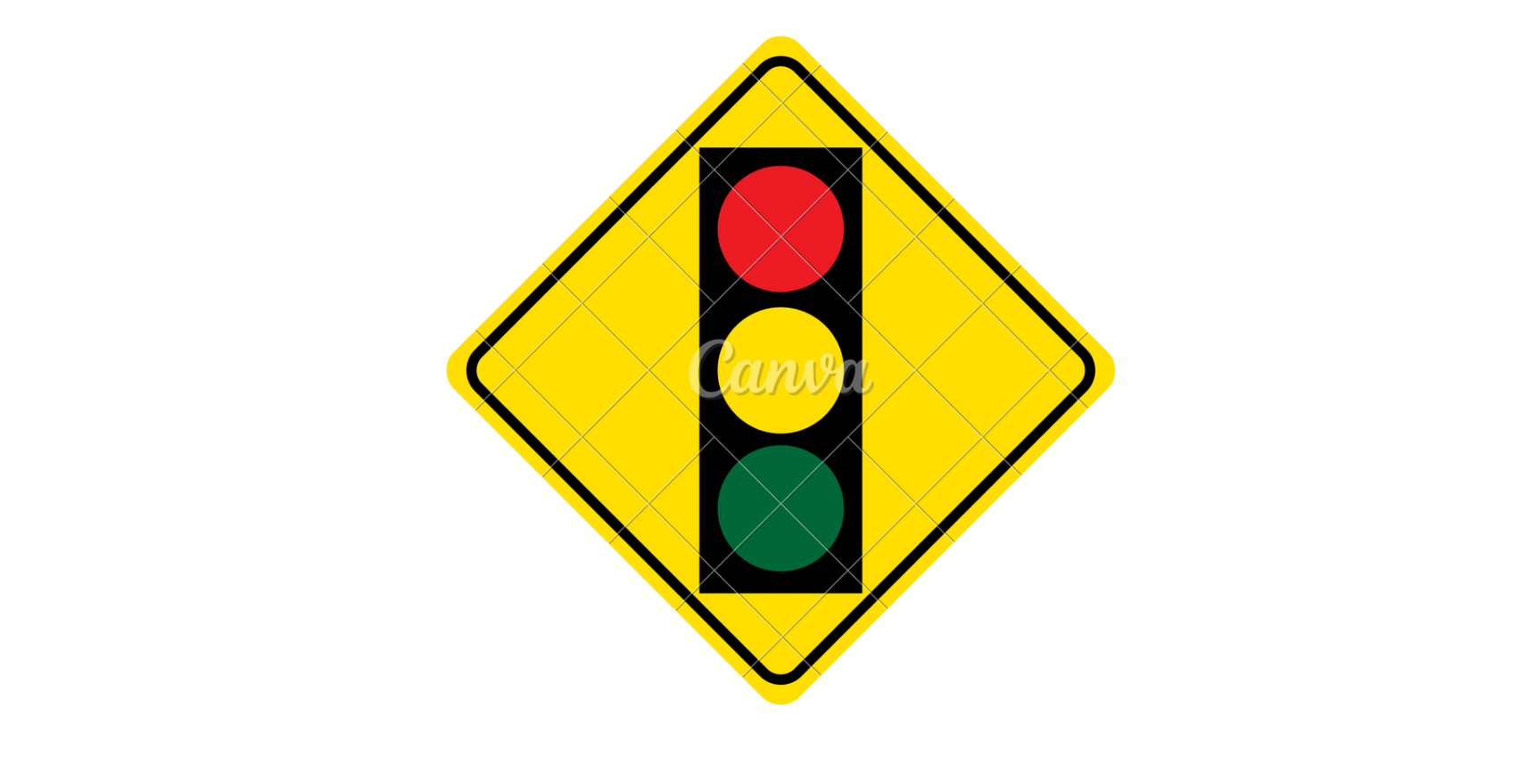
Information Signs:
Information signs are designed to provide useful information to road users, helping them navigate and make informed decisions while traveling. These signs typically have a rectangular or square shape, with white or green backgrounds and black lettering. Here are some common types of information signs:
- Hospital Signs: These signs typically display the symbol of a hospital and provide directions to nearby medical facilities.
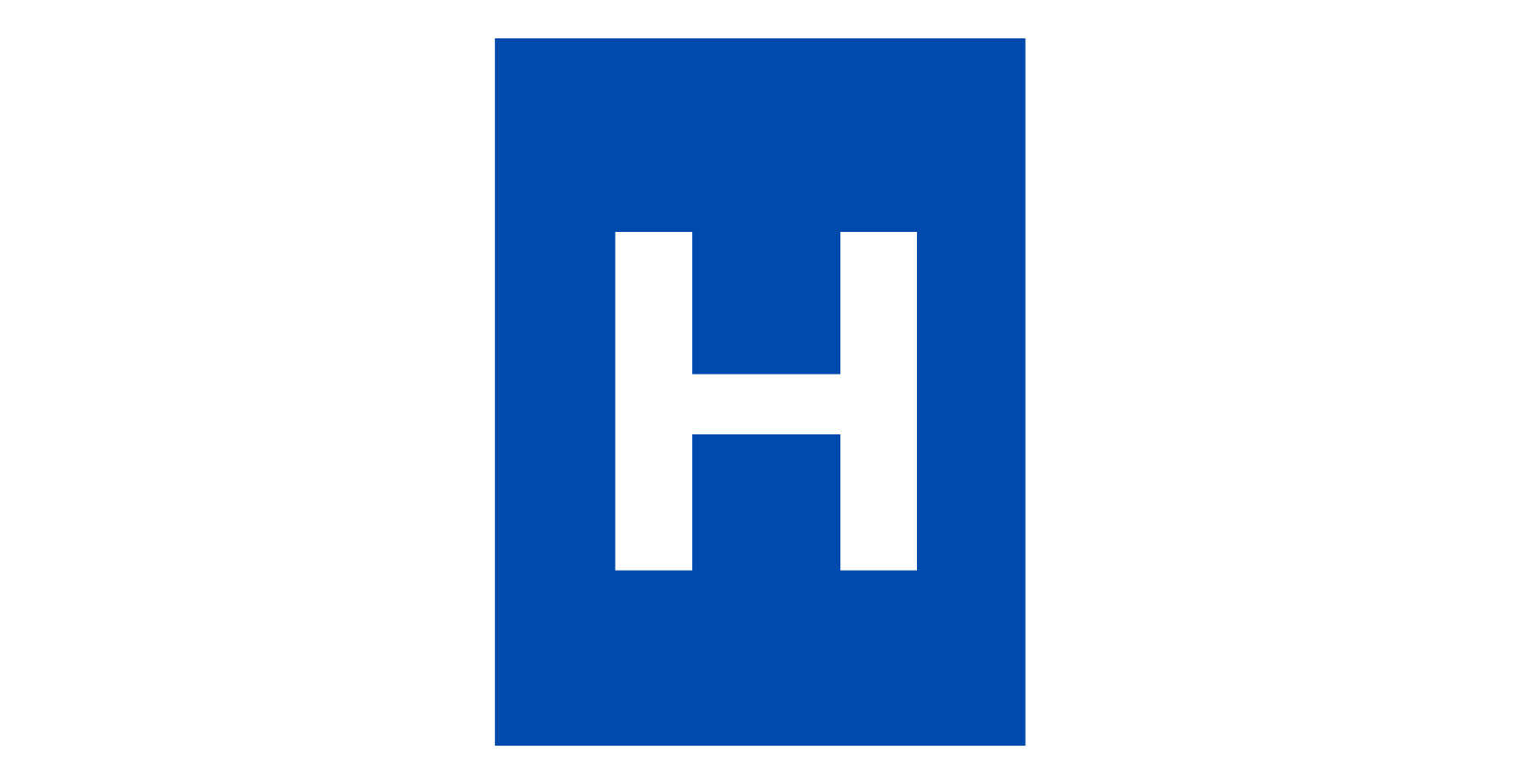
- Gas Station Signs: These signs indicate the location of nearby gas stations and often feature the symbols or logos of specific gas station brands.

- Rest Area Signs: These signs indicate the presence of rest areas along the roadway. They provide information on facilities such as restrooms, picnic areas, and parking for weary travelers.
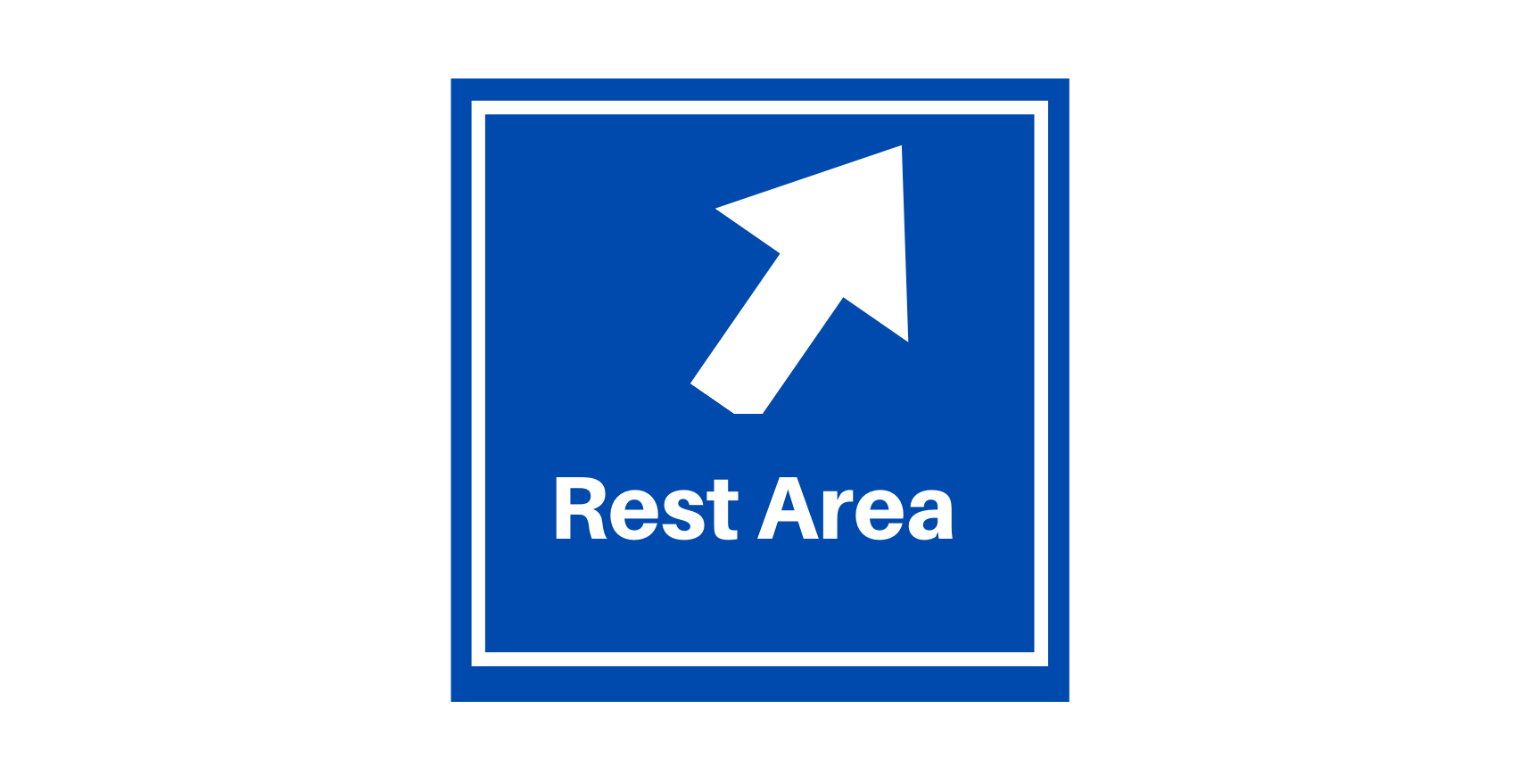
- Food and Lodging Signs: These signs provide information on nearby food and lodging options for travelers. They may display symbols or logos of specific restaurants, hotels, or other establishments.

- Tourist Attraction Signs: These signs guide drivers to popular tourist attractions or points of interest. They often feature symbols or logos representing the attractions.

- Airport Signs: These signs provide directions to nearby airports, usually indicating the distance and the appropriate exit or route to take.
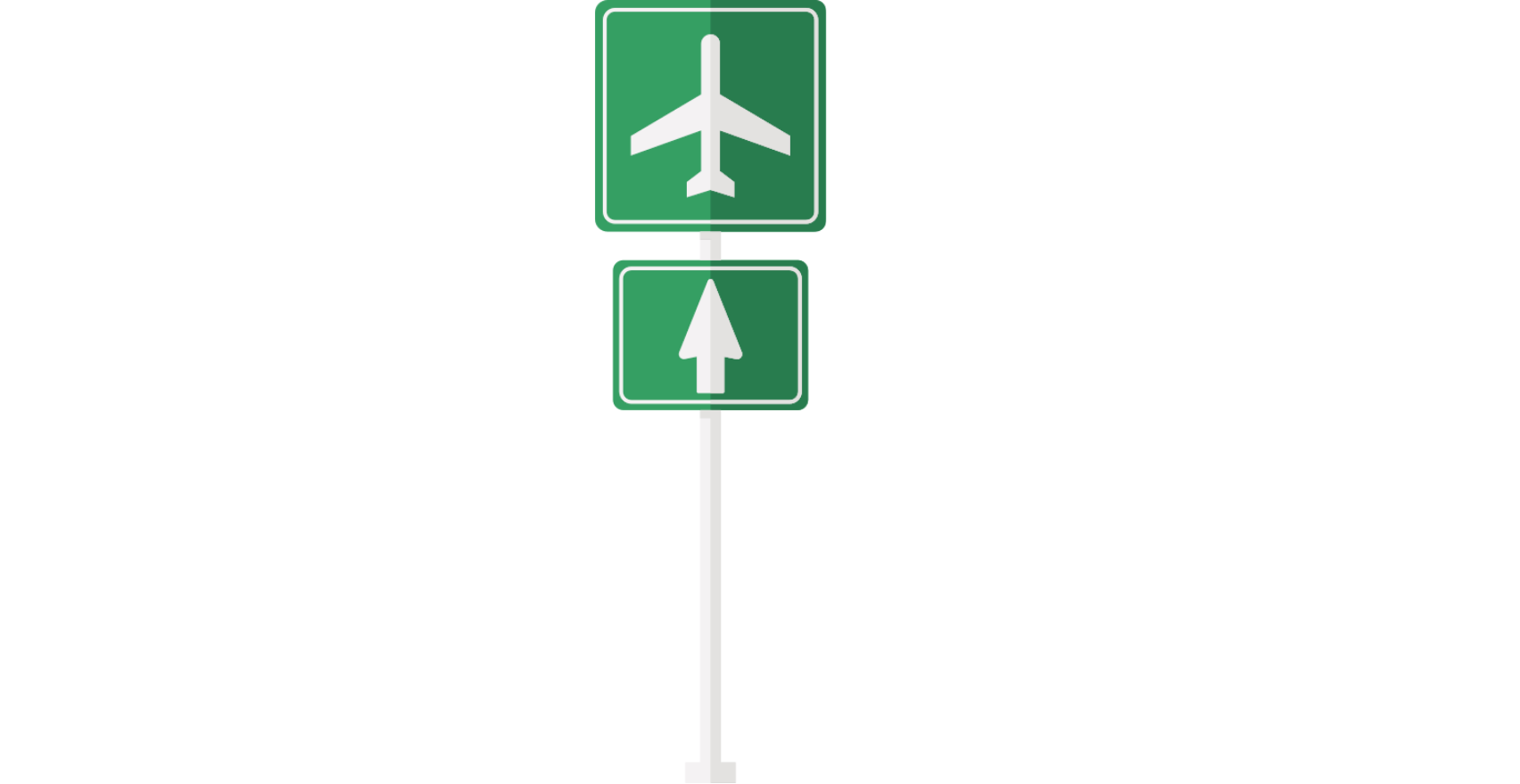
- Bicycle Route Signs: These signs indicate designated routes for bicycles. They may feature a symbol of a bicycle along with arrows to guide cyclists along the designated path.
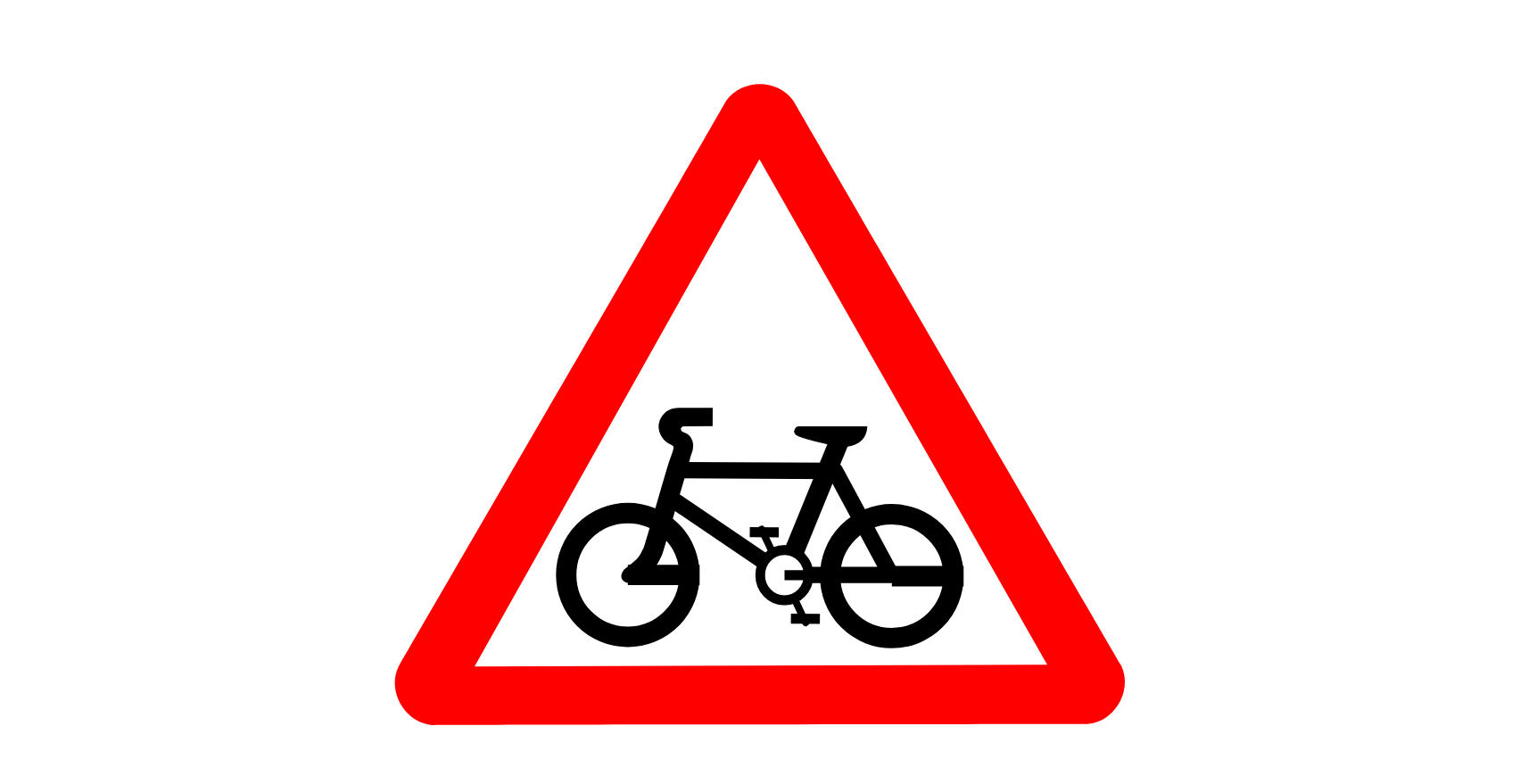
Traffic Signs and Their Meanings
Traffic signs play a crucial role in maintaining order and safety on the roads. Here are some common traffic signs and their meanings:
Traffic Signal Lights:
Traffic lights are machines that help control traffic at intersections or places where roads meet. They have different colored lights that tell drivers and pedestrians when to stop and go. Traffic lights are important because they keep everything organized and make sure that everyone can move around safely. They help cars and people go where they need to go without crashing into each other.
- Red Light: Requires vehicles to come to a complete stop. Proceed only when the light turns green and the intersection is clear.
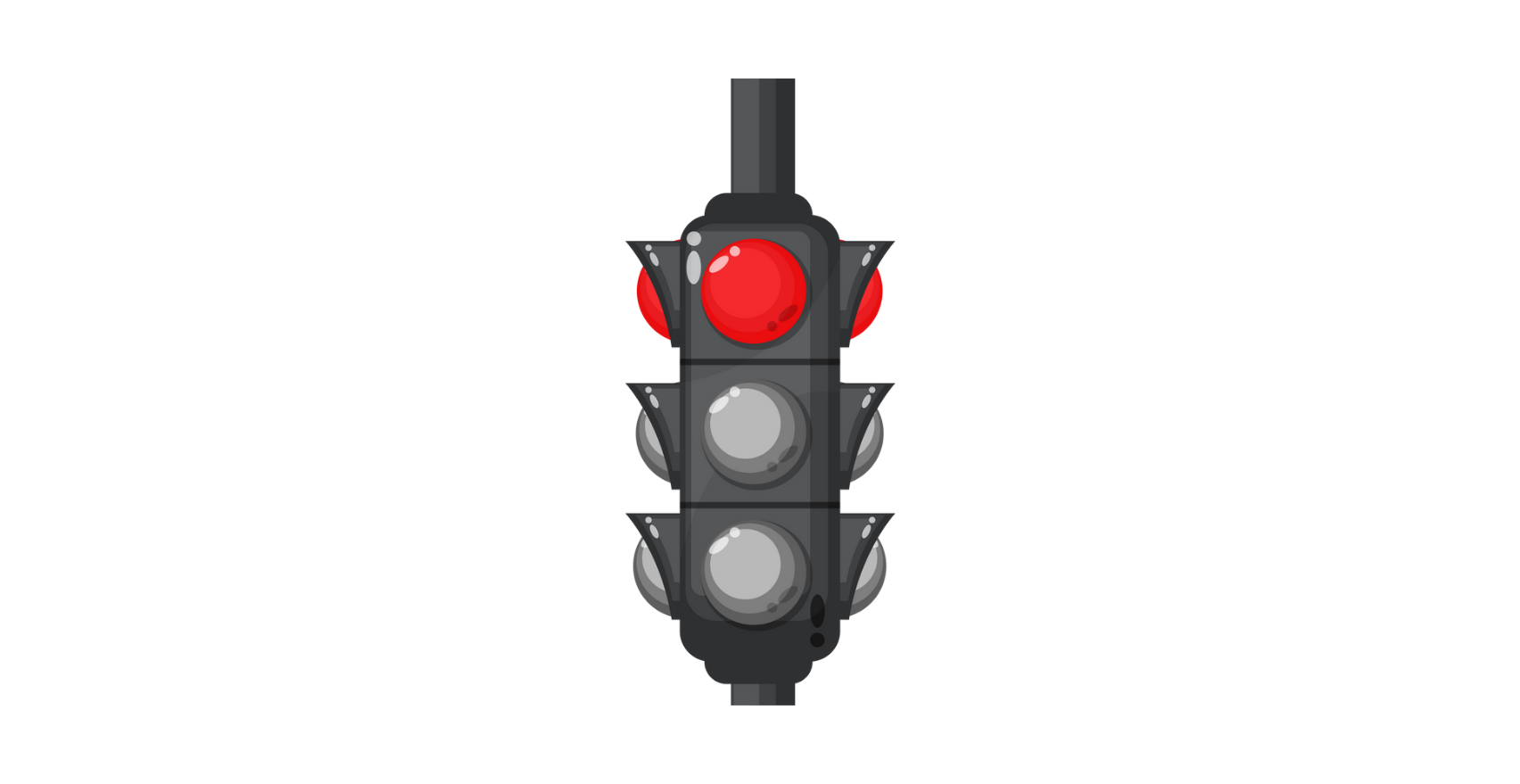
- Yellow Light: Warns that the light is about to change to red. Prepare to stop unless you are already too close to safely do so.
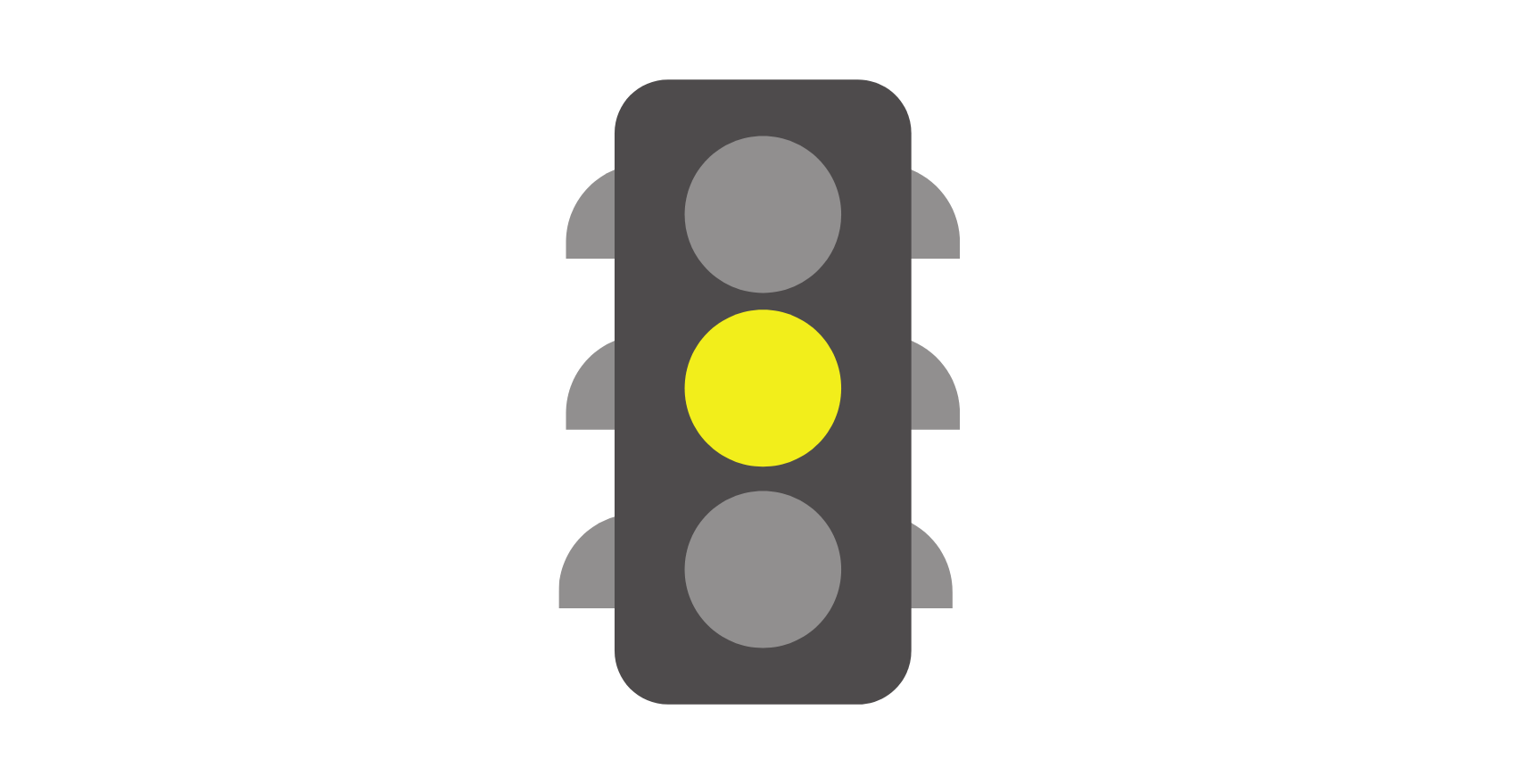
- Green Light: Indicates that vehicles can proceed, given that the intersection is clear and other rules of the road are followed.
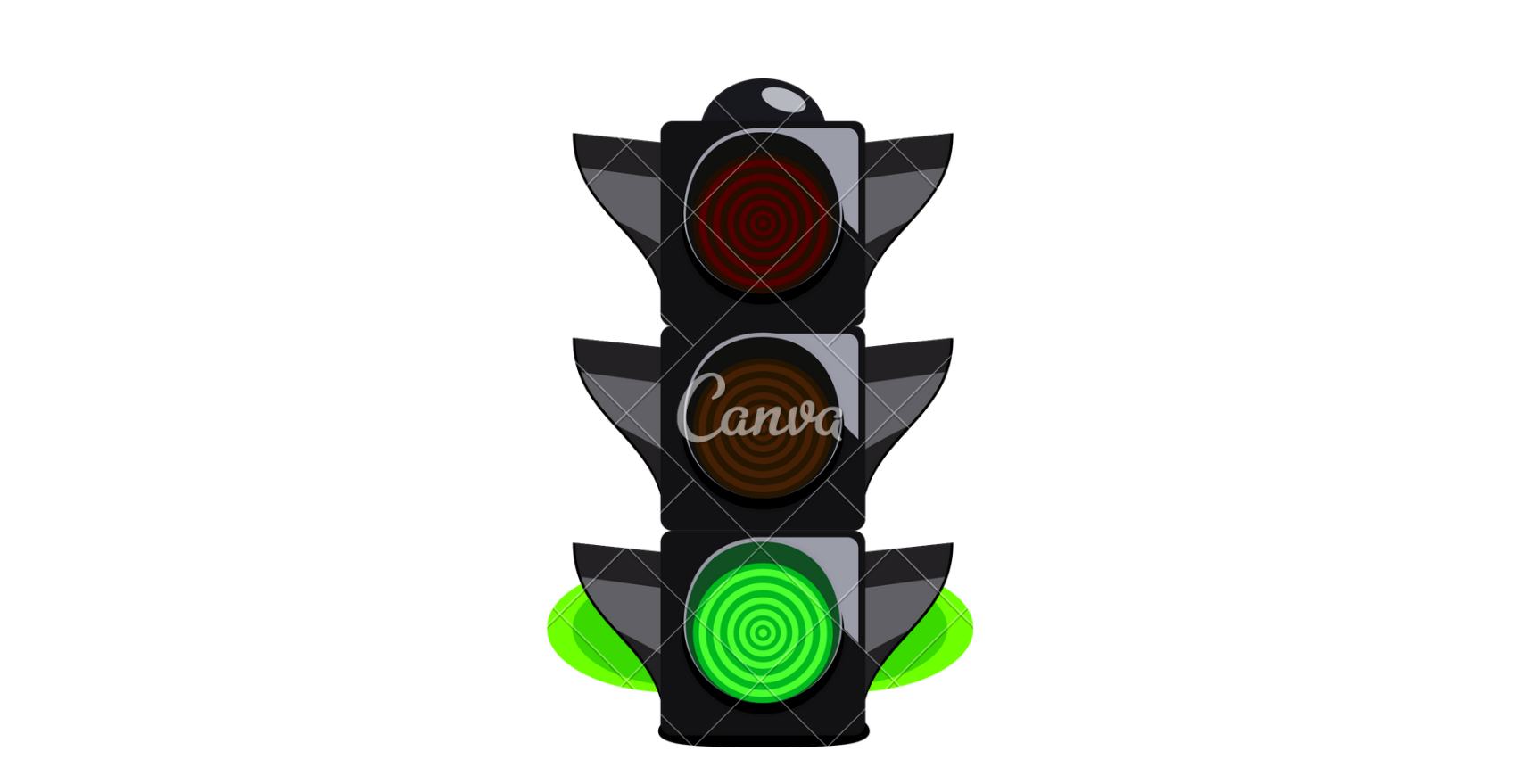
Arrows and Turn Signals:
Arrows and turn signals are additional components of traffic signal lights that provide specific guidance for turning vehicles at intersections. They are used to control and direct the flow of traffic, allowing drivers to make turns safely and efficiently. Here are the common types of arrows and turn signals you may encounter:
- Left Turn Arrow: Allows vehicles to make a left turn when the arrow is green and it is safe to do so.
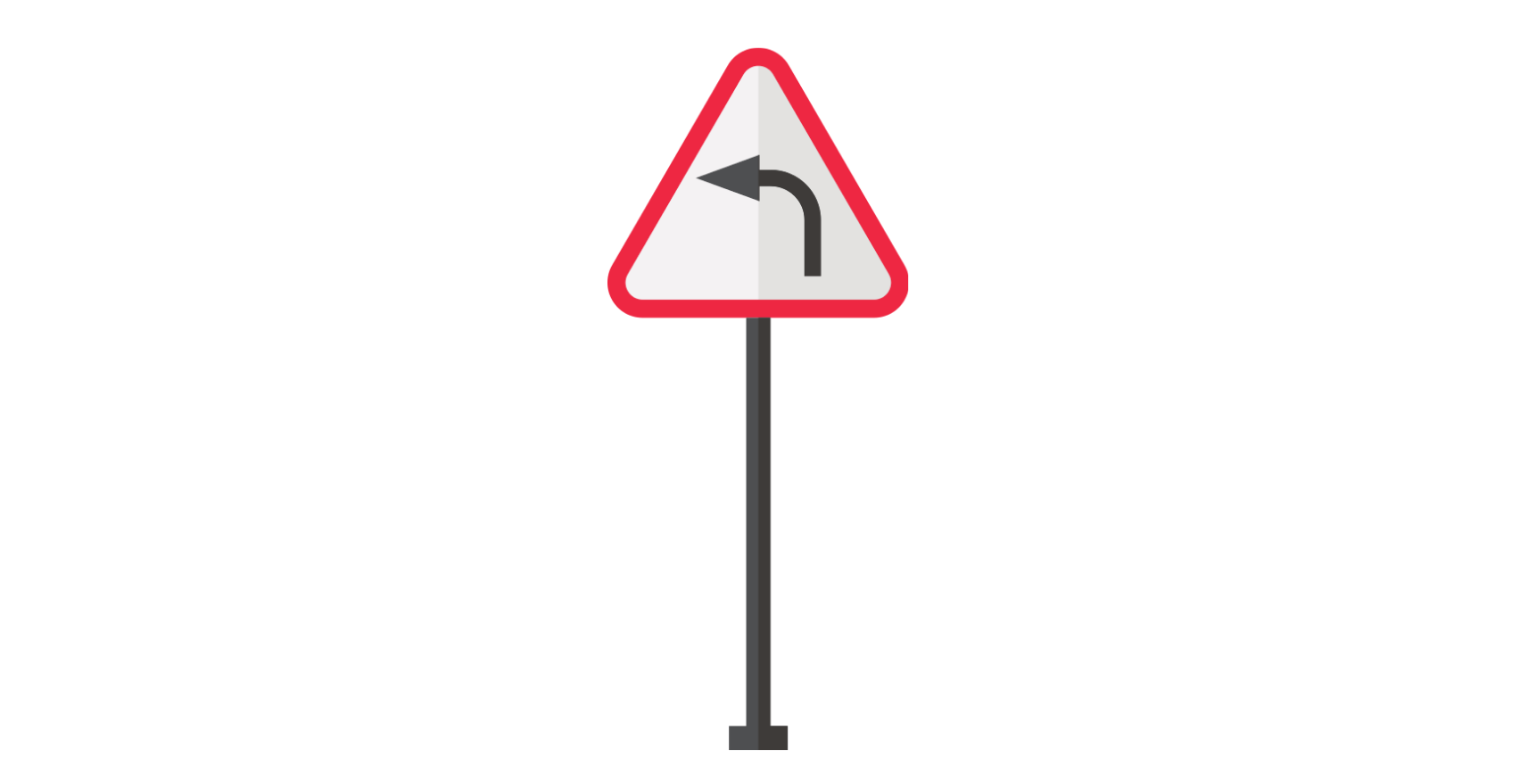
- Right Turn Arrow: Permits vehicles to make a right turn when the arrow is green and it is safe to do so.
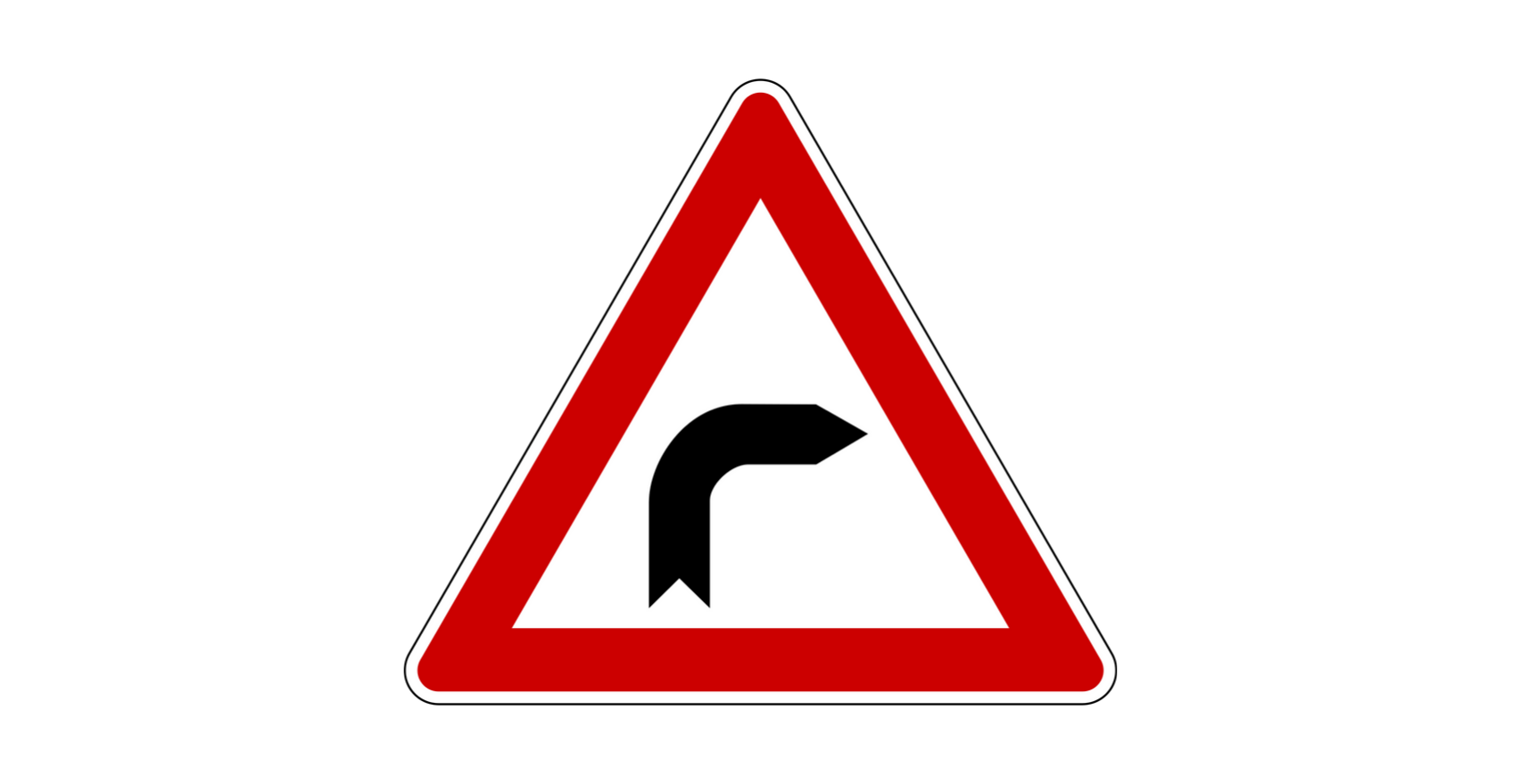
- U-Turn Arrow: Indicates that a U-turn can be made when the arrow is green, where permitted by local traffic laws.
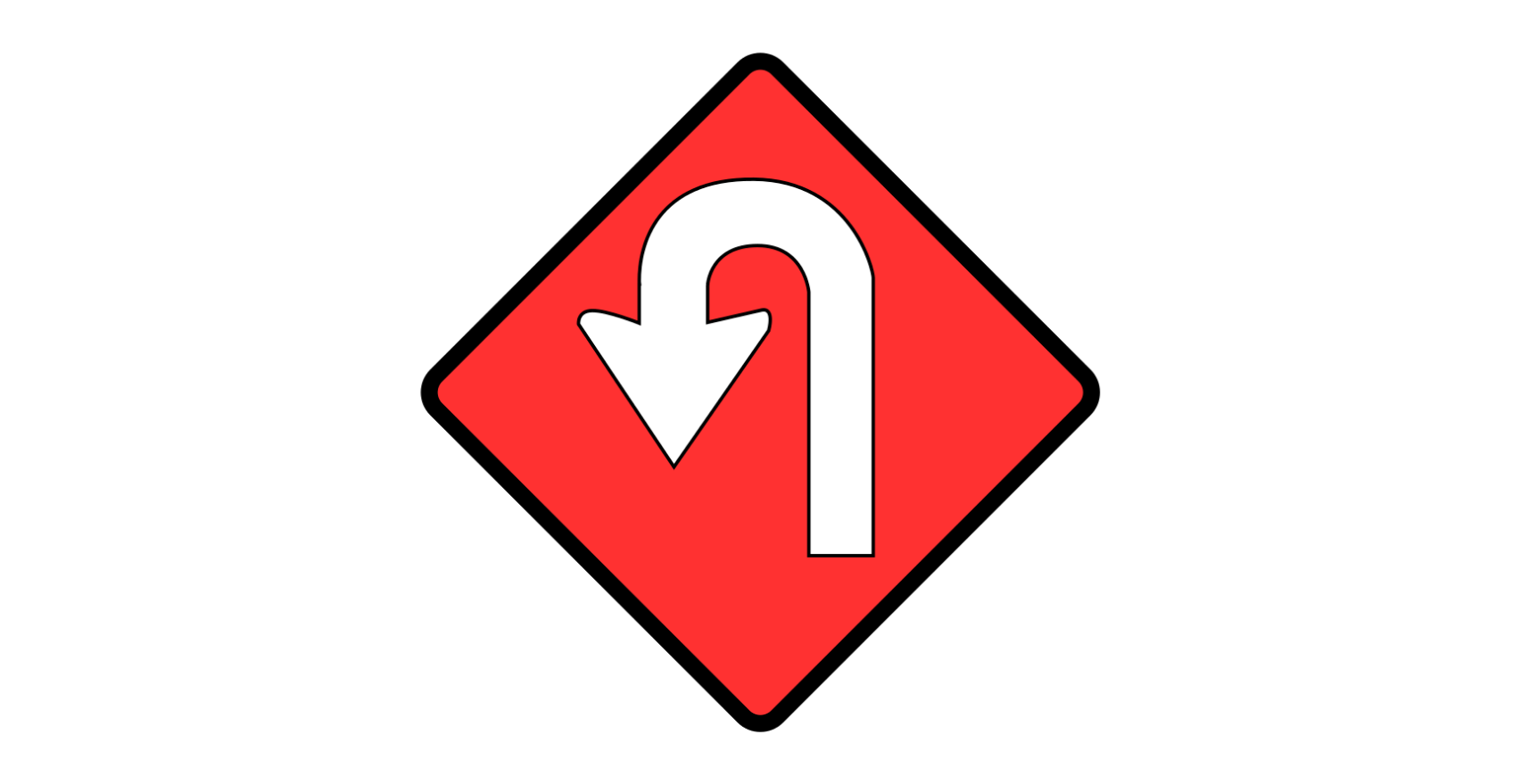
Pedestrian Signal:
Pedestrian signals are components of traffic signal systems that provide guidance and instructions specifically for pedestrians at intersections or designated crossing points. They are designed to ensure the safe movement of pedestrians across roadways and to coordinate their movements with vehicular traffic. Pedestrian signals typically consist of symbols or lights that convey specific meanings. Here are the common types of pedestrian signals:
- Pedestrian Signal (Walk): Pedestrians may start crossing the road when the symbol is displayed.
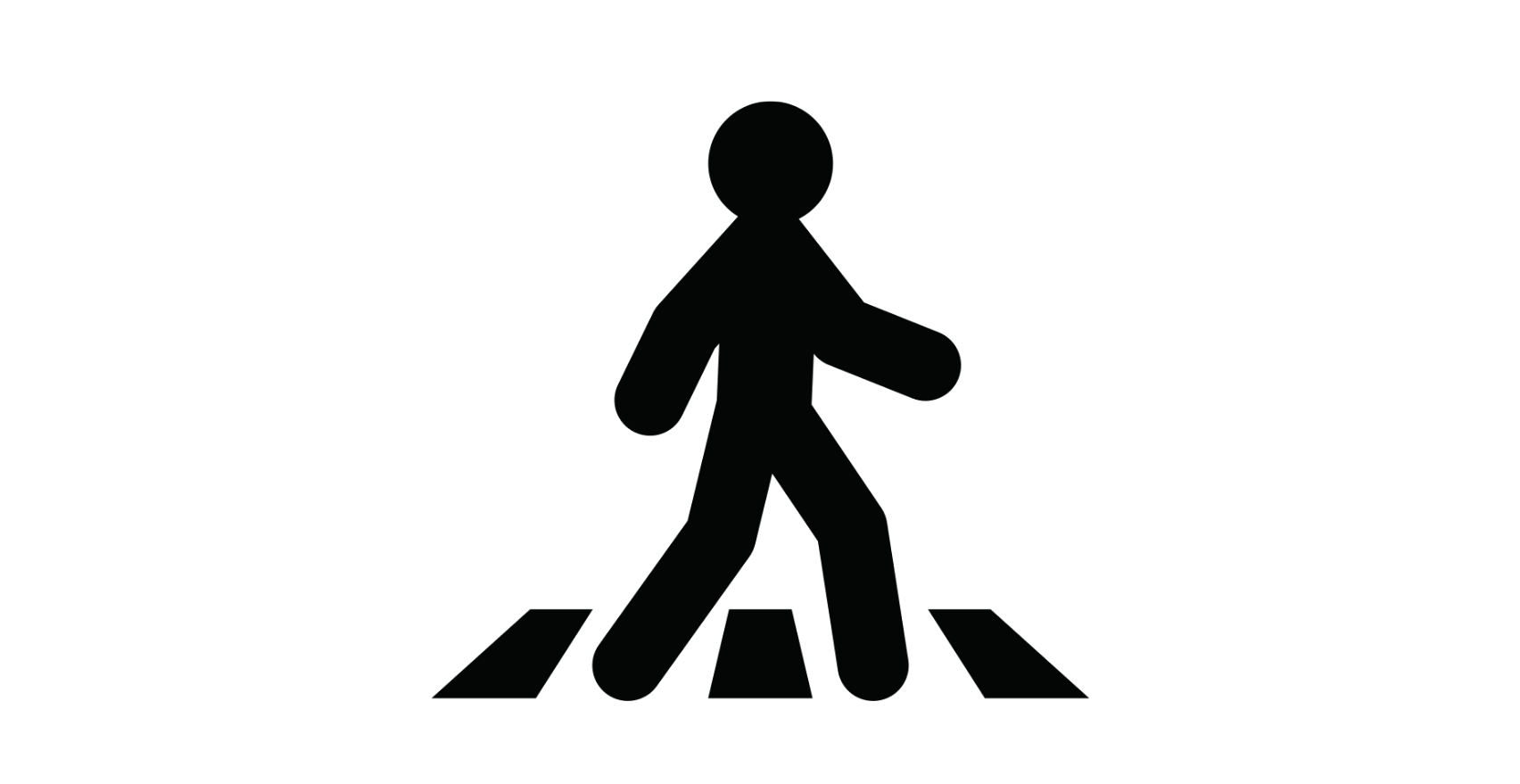
- Pedestrian Signal (Don’t Walk/Hand): Pedestrians should not start crossing the road when the symbol is displayed.
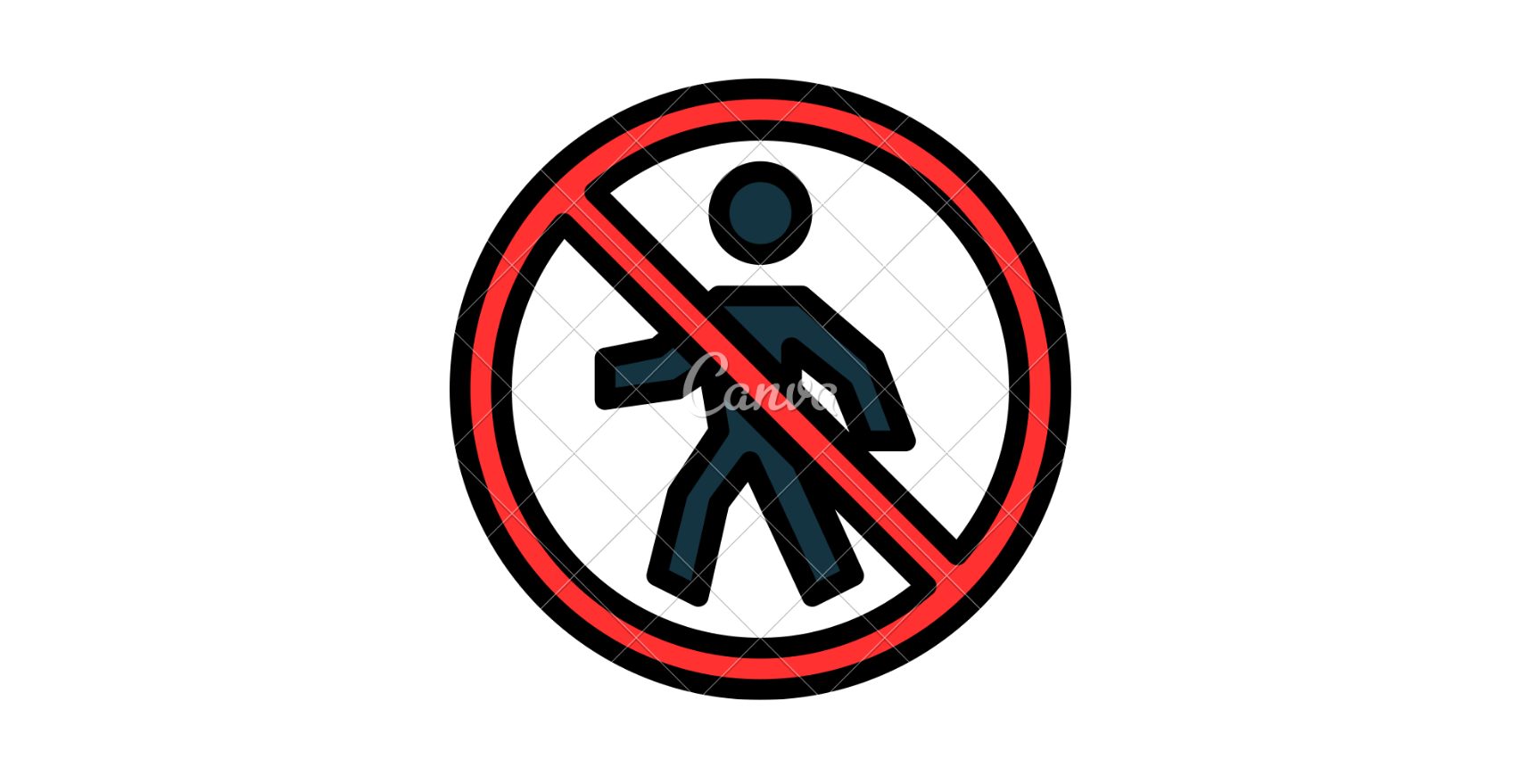
Railroad Crossing Signs:
Railroad crossing signs are traffic control devices specifically designed to warn drivers of the presence of a railway crossing ahead. These signs are crucial in alerting drivers to the potential hazards associated with railway tracks and trains, allowing them to take appropriate precautions. Here are the common types of railroad crossing signs:
- Crossbuck Signs: Indicates a railroad crossing. Drivers should yield to approaching trains and proceed with caution.
- Railroad Crossing Signal Signs: Additional warning signs placed near railroad crossings to alert drivers of the presence of a railroad track ahead.
- Railroad Crossing Gates: Automatic barriers that lower to prevent vehicles from crossing the tracks when a train is approaching.
Construction Signs:
Construction signs are special signs that are used to give important information and instructions to drivers, pedestrians, and construction workers in and around places where construction is happening. These signs are not permanent and are only there temporarily. They are very important because they help keep everyone safe by telling them about any changes or dangers related to construction work. Here are some types of construction signs that you might see:
- Detour Signs: Directs drivers to an alternative route because the regular route is closed or obstructed.
- Road Work Ahead Signs: Alerts drivers that road construction or maintenance is taking place ahead. Proceed with caution and follow instructions.
- Flagman Signs: Warns drivers to watch for a flagman directing traffic in a construction zone.
- Construction Zone Signs: Indicates the beginning and end of a construction zone. Drivers should slow down, be prepared for lane closures, and follow instructions.
Must Learn: Different parts of the motorcycle
Traffic Symbols with Names

